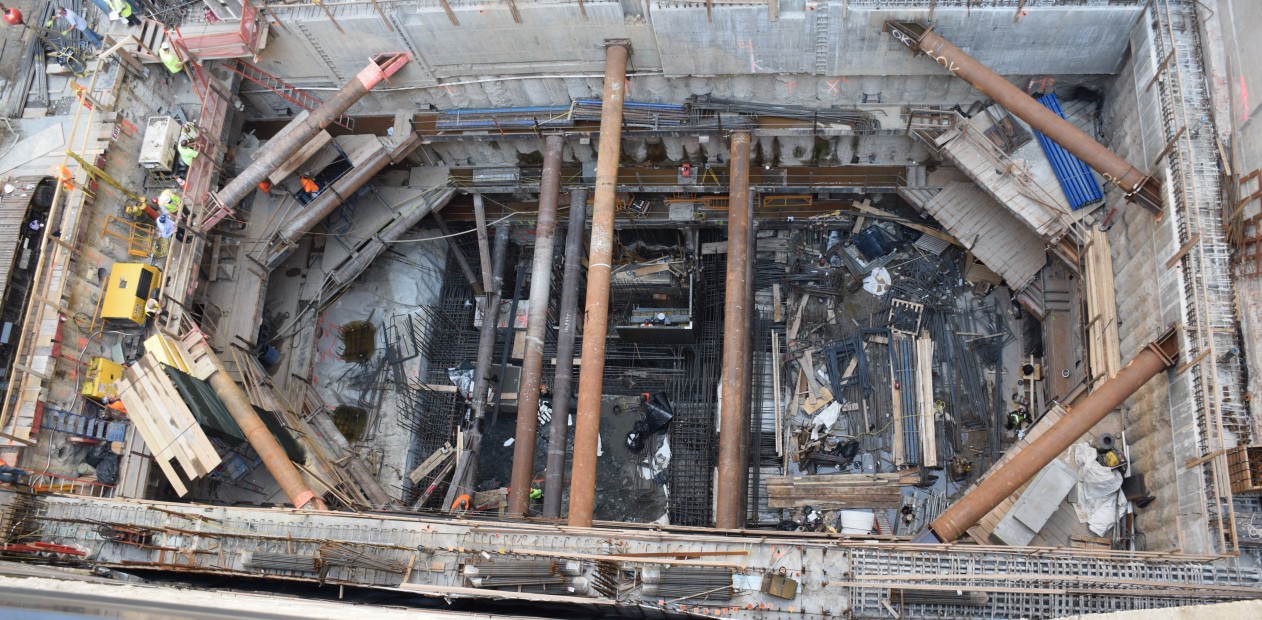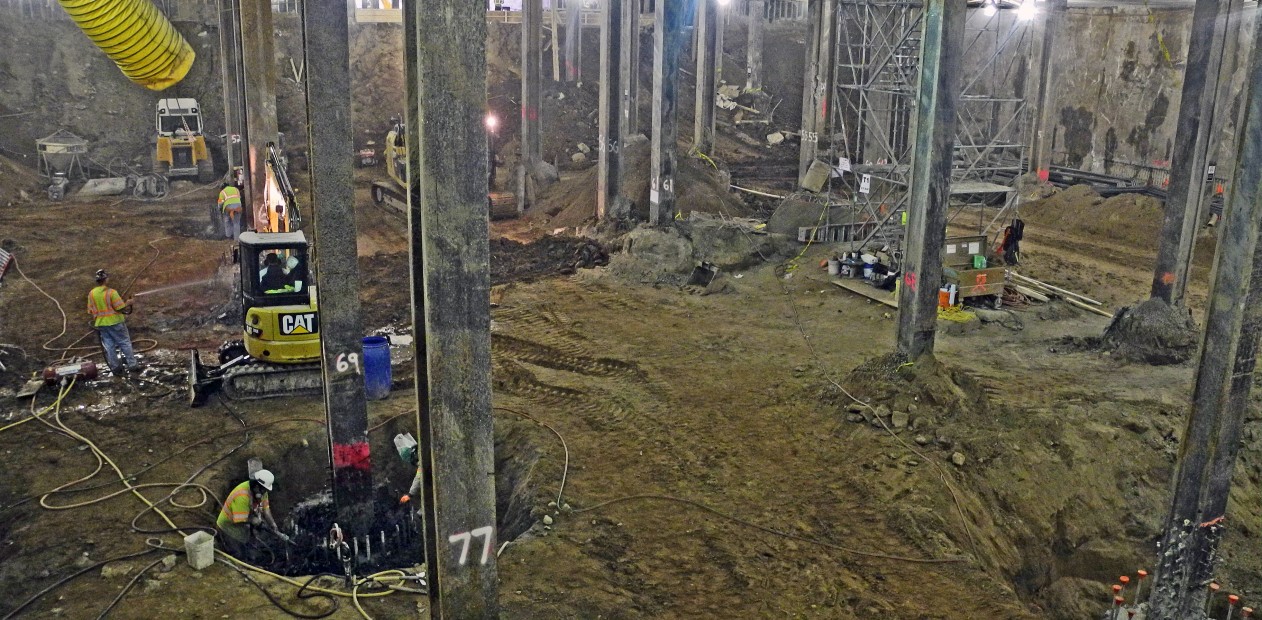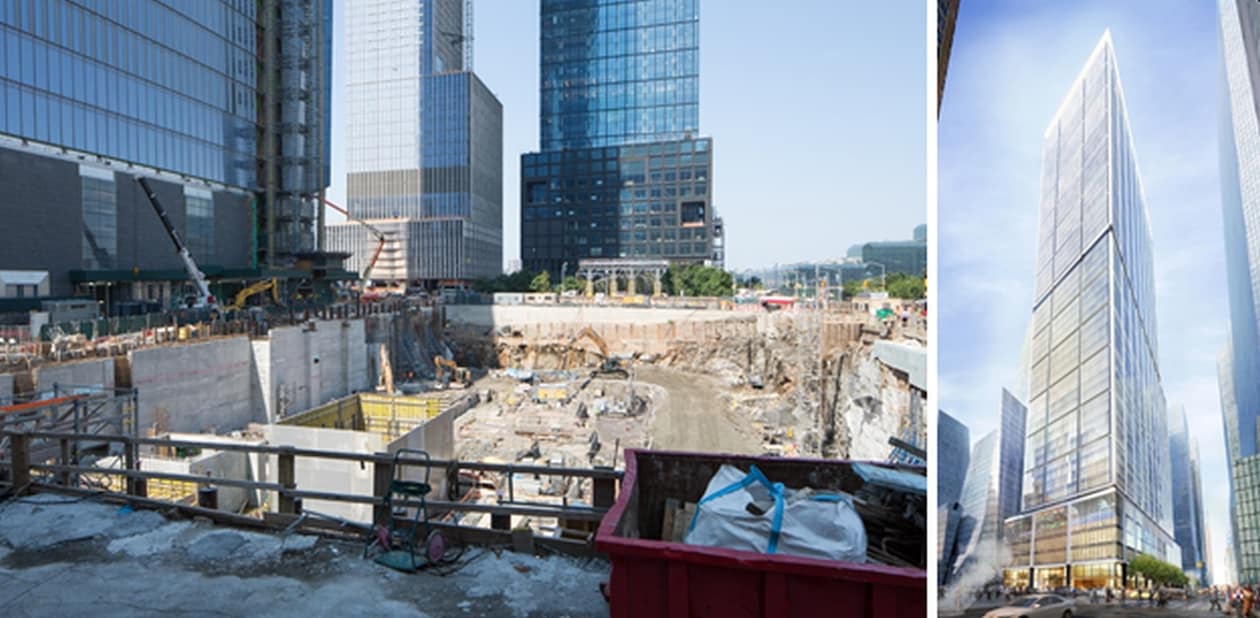
Excavations
Structural design for supporting excavations is required to safely construct foundations, deep basements, utilities, shafts, and tunnels. MRCE often faces the extraordinary challenges presented by developed urban sites, where excavations often extend below adjacent structures, tunnels, and utilities. Excavation is made more difficult when groundwater is present, and dewatering of excavations can cause settlement damage if not controlled. MRCE has decades of knowledge and experience in the definition of subsurface conditions, design of practical and cost effective excavation support systems, and groundwater isolation and extraction technologies.
- Excavation Support
MRCE specializes in the selection, design, contract documents, and construction inspection of excavation support structures. MRCE is a leader in the design of slurry walls and secant pile wall structures for temporary excavation support and permanent foundation support of the building superstructure. MRCE designers can mix and match systems in the geo-structures tool kit to optimize performance, schedule, and cost:
- Soldier piles with timber lagging
- Steel sheet piles
- Secant piles
- Slurry walls (Diaphragm walls)
- Soil mix walls
- Soil nail walls
- Tieback anchors and deadman anchors
- Internal bracing and rakers
- Underpinning
- Cellular Cofferdams
- Temporary Structures
Temporary structures facilitate construction of the permanent structure by providing construction access over water or in marsh areas, or by supporting equipment loads or street traffic. MRCE temporary structures experience includes:
- Street decking – foundations and sub-structure framing
- Trestles
- Crane platforms
- Top-Down Construction
Top-Down Construction is an excavation support method used in urban areas to construct deep underground space using permanent floor slabs to brace the excavation. The perimeter walls are typically permanent slurry walls or secant pile walls. The method provides stable excavations in poor ground conditions, and can significantly shorten construction duration and reduce project excavation cost. For greater schedule savings, foundation systems for the top-down method can be selected to allow superstructure construction to begin before top-down excavation is completed.
- Underpinning & Protection of Adjacent Structures
At congested urban development sites land prices drive basements deep, often requiring excavation below adjacent structures. MRCE is experienced in underpinning designs and controlled construction sequence needed to protect and permanently support adjacent structures. MCRE instrumentation of adjacent structures supports construction efficiency by providing “real time” knowledge of construction influence.
- Rock Excavation and Support
MRCE engineering geologists and geotechnical engineers tailor subsurface investigations to define rock mass properties and jointing structures. Geophysical testing and experienced interpretation of physical samples recovered in borings are used by MRCE to define rock mass properties for stability analysis and excavation design. MRCE inspects rock excavation in progress and directs rock bolting patterns, shotcrete applications, and concrete dental work, for face stabilization. MRCE designs have included line drilling, splitting, and expansive grout chemicals to reduce nuisance construction vibrations and noise from blasting. MRCE instrumentation services monitor vibrations for code compliance, and to support contractor control of rock blasting.


